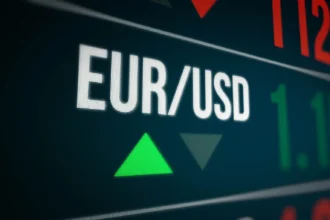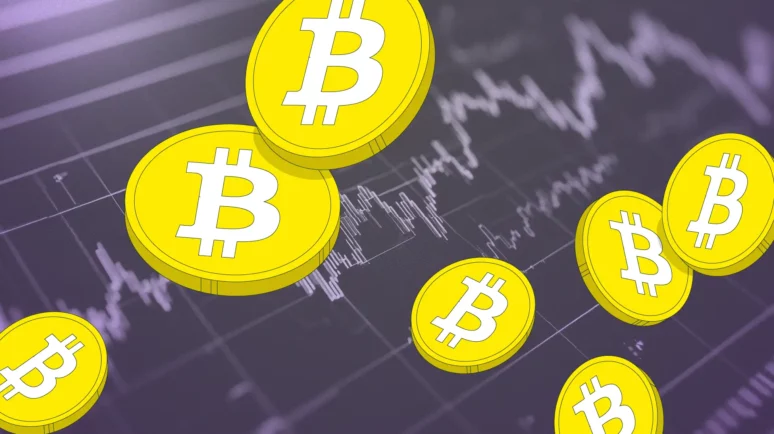Bitcoin & Gold Primed for Explosive Move After U.S. Credit Downgrade
The financial world is closely watching Bitcoin and gold as renewed economic concerns have thrown global markets into uncertainty. In a stunning development, the U.S. has lost its AAA credit rating, with Moody’s downgrading it to AA1, citing unsustainable debt levels and surging interest burdens. This shift has reignited investor interest in safe-haven assets — with Bitcoin and gold at the center of the conversation.
According to veteran financial journalist Michelle Makori, this downgrade creates “fertile soil” for a price surge in both Bitcoin and gold. In her analysis, “Hard assets don’t lie”, suggesting that traditional and digital stores of value may benefit significantly from eroding trust in fiat-based fiscal systems.
🔻 U.S. Credit Rating Downgraded: What Happened?
On the back of a staggering $36.2 trillion national debt and an annual fiscal deficit of $1.05 trillion, Moody’s Investors Service issued a credit downgrade to the U.S. sovereign rating — from AAA to AA1.
This places the United States on the same credit footing as Austria and Finland, nations with significantly smaller economies but more conservative fiscal policies. Moody’s cited the following reasons:
- Rising debt-to-GDP ratio
- Interest burden higher than peer nations
- Failed legislative efforts to curb fiscal spending
- Projected long-term debt increases due to political inaction
This comes after U.S. lawmakers recently blocked a tax-cut extension proposed by former President Donald Trump, which, if passed, would have added trillions more to the national debt.
⚠️ What It Means for Markets
Historically, credit downgrades for sovereign nations are seen as red flags for fiat currency stability and economic management. In response, investors often flee to safe-haven assets, such as:
- Gold: Long considered a hedge against inflation, geopolitical tension, and systemic risk.
- Bitcoin: Increasingly viewed as “digital gold” and a decentralized store of value, especially in regions with unstable monetary policy.
💬 “Watch Bitcoin and gold,” Makori urges, highlighting their potential to skyrocket amid growing financial instability.
📊 Market Snapshot – May 2025
| Asset | Current Price | ATH (All-Time High) | % Below ATH |
|---|---|---|---|
| Bitcoin | $103,502 | $109,026 (Jan 2025) | -5.33% |
| Gold | $3,196.80 | $3,509.90 (Apr 22) | -8.93% |
| S&P 500 | $5,953.57 | $6,147.43 (Feb 19) | -3.27% |
Despite a U.S.-China trade truce and a generally bullish environment in equities, both Bitcoin and gold are trading below their recent peaks — which many analysts interpret as a setup for the next major breakout.
📈 Bitcoin: Calm Before the Breakout?
Prominent crypto analyst Michael van de Poppe shared his bullish sentiment on Twitter, stating:
“Calm consolidation of #Bitcoin before the next big breakout in the next weeks towards the ATH.”
This mirrors the historical price behavior of Bitcoin: periods of sideways movement followed by sharp breakouts, often triggered by macroeconomic catalysts — and the U.S. downgrade could be just that.
Additional bullish indicators include:
- Rising on-chain activity and accumulation by large wallets
- Lower BTC exchange reserves, suggesting long-term holding
- Increased correlation with traditional safe-haven assets
📉 Gold: Discounted Safe Haven?
Gold, while facing a 10% drop from April’s all-time high, may be presenting an opportunity for long-term investors. Makori emphasizes that rising debt and inflation concerns will soon be reflected in a renewed flight to physical and digital hard assets.
Despite the recent pullback:
- Central banks are still aggressively buying gold
- Inflation expectations continue to rise
- Negative real interest rates are supportive for gold prices
⛏️ Gold remains the ultimate hedge — even more so as trust in fiat declines.
🌐 Global Economic Crosscurrents: Adding Fuel to the Fire
In addition to the credit downgrade, the global macroeconomic backdrop is intensifying:
- Trade uncertainty persists despite short-term deals
- Oil prices remain volatile amid OPEC+ supply adjustments
- U.S. retail and housing data showed weakness, increasing Fed rate cut expectations
- The 10-year Treasury yield dropped to 4.443%, indicating bond market caution
The combination of low growth expectations, declining bond yields, and currency devaluation fears creates an ideal scenario for alternative stores of value to outperform.
💬 Expert Insights
🗣️ “The relief from softer U.S. retail sales and PPI was palpable in the bond market,”
— Kenneth Broux, Societe Generale
🗣️ “We are in the early stages of a trade transition… uncertainty has disrupted builders and consumers alike,”
— Jeffrey Roach, LPL Financial
🔮 What to Watch Next
Investors should keep a close eye on:
- U.S. Fed Policy Shifts – Any move toward easing will likely weaken the dollar, benefiting BTC and gold.
- Inflation Data – Rising expectations favor hard assets.
- Debt Ceiling Talks – Further inaction could lead to market panic.
- Technical Breakouts – BTC crossing above $105K and gold reclaiming $3,300 would be key signals.
❓ Frequently Asked Questions (FAQs)
1. Why does the U.S. credit rating downgrade matter for Bitcoin and gold?
Because both assets are considered safe-havens. A lower credit rating signals growing financial risk in U.S. government debt, prompting investors to seek alternatives to fiat.
2. Is Bitcoin really a safe-haven like gold?
While more volatile, Bitcoin is increasingly seen as a hedge against fiat devaluation, similar to gold, especially during fiscal crises.
3. Could this lead to new all-time highs for Bitcoin and gold?
Many analysts believe that the current macro environment — including the U.S. credit downgrade — could catalyze fresh highs for both assets.
4. Is now a good time to invest in Bitcoin or gold?
That depends on your risk tolerance. Both are below their all-time highs and could present opportunities, but volatility should be expected.
5. How do rising interest rates impact gold and Bitcoin?
Generally, higher rates hurt gold and BTC by increasing opportunity costs. However, if real rates remain negative (inflation > yields), both can still rise.
⚠️ Disclaimer
📌 The content provided in this article is for informational and educational purposes only. It does not constitute financial, investment, or trading advice. Always do your own research and consult a licensed financial advisor before making any investment decisions. Cryptocurrency and precious metal markets are volatile and carry significant risk. 💼📉



